New….from the KCM Crew.


Interesting Globe article confronting the lack of housing starts statewide.
GLOBE CORRESPONDENT
It’s a scenario that would be familiar to anyone who lived through the Massachusetts Miracle of the late 1980s and the bull housing market of the last decade, go-go years of soaring home prices and tight supplies that ultimately ended badly. And if policy makers, economists, and industry officials are accurate in their predictions, history is set to repeat itself.
“We’re just going down the same old road we went [down] before,” said Brad Campbell, executive director of the Homebuilders and Remodelers Association of Massachusetts.
The housing market in Massachusetts appears trapped in a boom-bust cycle that only seems likely to accelerate. While any number of variables — interest rates, job growth, consumer confidence — influence home sales and prices, the fundamental problem for the local housing market has remained unchanged for decades: The state doesn’t build enough housing to keep up with increasing population and households.
And Massachusetts fell further behind in housing production in recent years. Even at the peak of the last boom, housing production remained well below the levels of decades ago. In 2005, about 24,500 building permits were issued for both single-family and multifamily housing units in Massachusetts, compared with more than 30,000 in 1980, according to the Commerce Department.

By 2009, the depths of the last recession, building permits had fallen to fewer than 8,000, and in 2012, three years after the recession, building permits issued for housing units were still less than half the number of 2005. Meanwhile, the state’s population grew by more than 400,000, according to the census.
“There’s simply no question that we’re not building enough housing units to meet demand,” said Barry Bluestone, an economist and director of the Dukakis Center for Urban and Regional Policy at Northeastern University.
The expected consequences can be lifted right out of the most basic Economics 101 textbook: Supply shortages lead to rising prices.
Deborah Heffernan, co-owner of Avenue 3 Real Estate in Cambridge, recently listed a four-bedroom, single-family home in Arlington. It was under contract within six days, after 25 groups of people toured the house and three bidders drove the price to $75,000 above the asking price of about $1 million.
Another bidding war between two potential buyers pushed the price of a three-bedroom Arlington condo $22,000 above the asking price of $439,000, said Heffernan, adding that she has heard of other real estate agents fielding 10 to 15 offers for some homes.
“It’s just crazy,” she said. “You have more people vying for fewer properties today, and it’s just adding to the price pressure.”
In April, the number of single-family homes on the market in Massachusetts was down more than 30 percent from the same month last year, the 29th month in a row in which inventories were below their prior-year levels, according to the Massachusetts Association of Realtors.
Median prices for single-family homes, while still below their prerecession levels, are rising quickly. In May, the median price for a single-family home in Massachusetts jumped by 12 percent, to $324,000, compared with the same month a year ago, according to data from the Warren Group, a Boston firm that tracks real estate. That was the fourth consecutive month of year-over-year double digit increases, the fifth in the past six months, according to the Warren Group.
Rising prices, of course, are good for homeowners and the broader economy, creating wealth that supports consumer spending and a range of economic activities. But if prices rise too fast, it can create the psychology that leads to a bubble, pushing more buyers into the market and driving many to spend and borrow too much with the idea that prices will only go higher.
Eventually, as recent history shows, they don’t go higher, and the bubble bursts.
Some economists attribute recent price spikes to temporary conditions, a combination of pent-up demand from buyers who stayed on the sidelines during the recession and a reluctance by potential sellers to put homes on the market until prices return to prerecession levels.
As the market gets back to normal, inventories will rise and price increases will moderate.
But this short-term adjustment by the market won’t address the long-term issues, other analysts said.
A recent study by Bluestone and his Northeastern colleagues shows that Greater Boston alone — or Essex, Middlesex, Norfolk, Plymouth, and Suffolk counties — needed, at minimum, to add 12,000 new housing units per year from 2010 to 2020 just to meet very modest population and economic growth — a quota the region has yet to meet.
The number climbs to as high as 19,000 units per year if the region experiences stronger growth, Bluestone said.
In particular, the state needs more multifamily housing — apartment and condo buildings — to meet the demands of younger workers and aging baby boomers who increasingly prefer to live in smaller units in urban areas, Bluestone said. There’s been an increase in multifamily housing construction in the past few years, particularly in the city of Boston, but much more still needs to be done, said Bluestone.
The Northeastern study is one of the reasons why Governor Deval Patrick last fall called for a goal of 10,000 new multifamily housing units per year through the end of the decade.
Economists and policy makers aren’t just concerned that short supplies could inflate another price bubble. They also worry that they could undermine the state economy by making Massachusetts too expensive to attract and keep talented workers, particularly young workers who can live and work in other parts of the country where prices are lower and earnings go farther.
“We’ve had a chronic problem for years of high rents and high home prices, much higher than the rest of the country,” said Greg Bialecki, Patrick’s secretary of housing and economic development. “And that’s clearly pushed young people and young couples out of state.”
But such plans are all but certain to run into the same challenges that have constrained housing development for decades: a limited amount of developable land and strict zoning rules and building-lot requirements in many towns and cities in the area.
Geoffrey Beckwith, executive director of the Massachusetts Municipal Association, bristles at the suggestion that local building rules are the primary cause of a housing shortage that makes the state a less attractive place to live and work.
“Current zoning laws are what brought people to these towns in the first place,” said Beckwith, adding that many towns can’t afford the extra schools and services associated with new housing.
But Clark Ziegler, executive director of the Massachusetts Housing Partnership, a quasi-state agency that promotes affordable housing, said something needs to change at both the local and state levels in order to avoid a repeat of the boom-bust cycle.
“The underlying problem is that nothing has changed over the years,” said Ziegler. “This is not a pattern that can and will sustain a modern economy. We need to make changes.”
PROVINCETOWN — The new bathhouse at Herring Cove Beach will open Saturday as summer crowds really start to arrive at the Cape Cod National Seashore’s most popular swimming beach.
The $5 million facility is a marked departure from the beige and dank 1950s-era bathhouse demolished last fall. In its place are four shingled cottages, about 400 to 600 square feet each, sitting on pilings and connected with wide decks. Each building takes care of the small things to make for a good time at the beach: changing into swimsuits, taking a quick bathroom break and downing cold drinks and food. The outdoor areas seem open and inviting enough, with broad views of the sea, that they might be a place people could gather in the evening.
“We talked about it being a destination,” Seashore Deputy Superintendent Kathy Tevyaw said as she stood Tuesday with her back to the sea, facing the new buildings, in near 80-degree heat. Workers were scrambling to complete a cedar-framed trellis that will provide shade on the decks. Benches still needed to be installed and signs hung. Shingles on two buildings are arranged to resemble a whale and a sea turtle to reflect the animal life nearby.
The upgrades are both fun and serious, according to National Park Service project manager and architect Amy Sebring.
The bathhouse — like plans for the beach’s northern parking — has been designed to withstand the effects of climate change, such as rising seas and fierce winter winds, and to allow dunes to migrate naturally. The buildings and decks have been pulled back at least 100 feet from the edge of the coast and raised about 4 feet. The modular design could make it possible to move the buildings even farther back. The posts for the trellis can withstand 150 mph winds, Sebring said.
“This will still be standing,” Sebring said with her hand on a post, somewhat jokingly, when other structures in town have been flattened.
“Structural integrity is a big agenda for the National Park Service as a whole,” she said.
The beach had 876,000 visitors in 2012, according to the National Park Service.
The Seashore received money to rebuild the bathhouse two years earlier than expected, in part because of the previous building’s poor condition, its vulnerability to heavy surf and erosion, and the need to use money that was at risk of not being available later, Sebring and Tevyaw said last fall. A plan to move the 208-spot northern parking lot back about 125 fee back and 15 feet higher will, according to Seashore officials, help protect it from storm erosion and maintain a favorite drive-up spot for the beach.
Even the food served at the new bathhouse’s snack bar has a forward-thinking vibe, with the recent launch within the National Park Service of a move toward more healthful and sustainable food. A Provincetown business, Far Land Provisions, has won a three-year contract to run the snack bar, Seashore Superintendent George Price announced Thursday in a written release. Far Land Provisions is a food store, deli, bakery and catering company on Bradford Street. The snack bar will open next week, with hours probably from just before lunch to sunset, co-owner Tom Boland said Tuesday.
“We’re very excited,” Boland said. “It’s a beautiful facility. They have done such an amazing job.” Rest assured, Boland said, the snack bar will definitely be serving hot dogs.
Jenifer’s Wednesday Globe article illustrates the growing confidence and underlying challenges with the Massachusetts housing market surge.
| GLOBE STAFF JUNE 26, 2013
Home sales climbed 6 percent from May 2012, while the median home price increased by nearly 12 percent to $324,500, according to the Warren Group, a Boston company that tracks local real estate. It was the fourth consecutive month of double-digit price increases.
The housing recovery is accelerating as buyers — cognizant that home values are on the upswing — compete for a limited supply of properties, prompting bidding wars and huge increases in prices in many popular neighborhoods. Rising interest rates also are pressuring buyers to get into the market now.
While still historically low, the average rate on a 30-year mortgage has risen to about 4 percent from 3.6 percent a month ago, according to Inside Mortgage Finance, a Maryland-based trade newsletter.
“Prospective buyers have displayed a voracious appetite for real estate this year,” said Sam Schneiderman, president of the nonprofit Massachusetts Association of Buyer Agents. “Many buyers are finding themselves playing a game of ‘beat the clock’ to buy a house before rising prices and interest rates impact their ability to buy a home that they can afford.”
The recovery in Massachusetts reflects the strengthening housing market nationally as unemployment falls, incomes rise, and consumer confidence improves. The Commerce Department said Tuesday that US sales of new homes in May surged 29 percent from a year ago. S&P/Case-Shiller Home Price Indices, a well-reputed measure of the housing market’s health, reported an average price increase of about 12 percent in the 20 metropolitan areas the index tracks.
Home values in San Francisco surged 23.9 percent in April from April 2012, while Las Vegas values rose 22.3 percent, according to the Case-Shiller index. The Boston area experienced an 8.1 percent increase.
Karl E. Case, cocreator of the index, said appreciation in the Boston area appears to be moving at a sustainable pace. Home values in Boston peaked in 2005 and fell about 20 percent before hitting bottom in 2009, according to the index. They remain about 13 percent below their peak.
Case said he is concerned that other areas of the country, particularly California, may be heading toward another bubble. “There’s a bunch of exuberance out there,” Case said.
In Boston, tight inventories of homes for sale have pushed prices higher. The lack of homes on the market has also constrained sales: In the first five months of the year, sales in Massachusetts declined slightly from the same period in 2012, according to the Warren Group.
Many economists expect the strong price increases to moderate as more sellers put homes on the market and interest rates rise. “Buyers expecting home values to continue rising at this pace indefinitely may be in for a shock,” said Stan Humphries, chief economist for Seattle-based real-estate company Zillow.
Despite the improving economy and housing market, many struggling homeowners and renters are not benefiting from the housing recovery, said Eric Belsky, managing director for the Joint Center for Housing Studies at Harvard University.
The center is expected to release a report Wednesday that shows millions of US homeowners still behind on mortgages or owning homes worth less than the amount of their mortgages. The study will also note that banks are maintaining tight lender standards that are blocking would-be home buyers from loans while mortgage rates are low and prices reasonable.
“Tight credit is limiting the ability of would-be home buyers to take advantage of today’s affordable conditions and likely discouraging many from even trying,” said Chris Herbert, the center’s director of research.
Jenifer B. McKim can be reached at [email protected]. Follow her on Twitter @jbmcki
This is the 3rd in my series of reviews of the three key market segments in Provincetown. The $1M plus market, the mid-market and last but not least the affordable entry level market. The entry level market in Provincetown is the $200K to $400K price range. Buyers are constantly surprised at some of the great properties that are on the market in this price point.
73 properties sold between $200K and $400K in 2012, accounting for 34% of the total sold. The average property sold in this price range was a 1 bedroom, 1 bath with 620 square feet and a sales price of $314K. Surprisingly 6 of the 73 were single family properties. I have included 2 of those below. One at 130 Commercial St is known to anyone who knows the West End well. A sweet little box of a single family right on Commercial Street past Pleasant. It has been renovated into a wonderful little house! The other single family property shown is 32 Ships Way Road.
One of our favorite condos was a stand alone studio in the West End that we sold last year. It was on the corner of Atwood Street and W. Vine, in the rear of a 4 unit condo complex at 14 West Vine. (see pic) It had a loft bed, a gas wood burning stove, and a wonderful private fenced in garden patio. Another favorite was 75 Province Lands Road which was a 1 bedroom end unit that has full on water views of the moors and beyond.
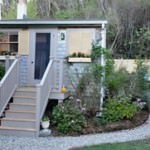

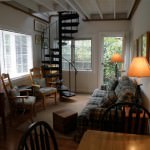
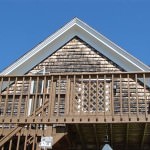
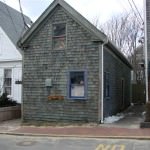
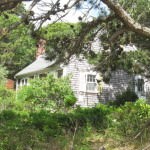
Currently there are 52 properties on the market representing 33% of all properties being marketed for sale, of which 3 are single family properties. The average being a 1 bedroom, 1 bath with 620 square feet with an asking price of $325K. Below are 6 properties that are currently available.
23 Conant, 7 Webster are stand alone condos, with all the privacy that comes with that. 30 Bangs is at the end of Bangs Street across Bradford in a quiet private complex. 60 Race Road is a spacious 2 story townhouse with a full basement.
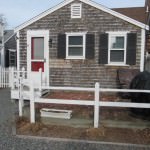

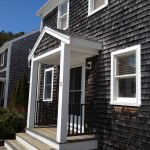
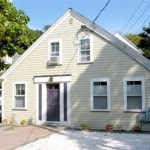

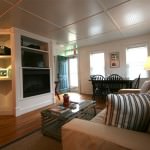
Year to date 29 condos have sold with sales prices in this range representing 47% of all properties sold so far this year. It’s a very busy segment of the market and you can see why when buyers have the choices like those shown below. The average condo sold was a 2 bedroom, 1 bath condo of 741 square feet selling for $303K.
88 Bradford St is an end unit with vaulted ceilings and lots of private use outside space. 23 Conant is a cute stand alone condo in the near West End while 2 Mayflower is a charmer of a cottage in the woods in the far East End. 163 Bradford St #1 was bought by some very dear friends. It’s central location, 2 baths and extra room along with wonderful private use outside space made it a great value.
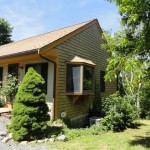
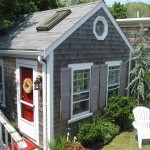
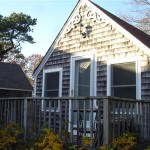

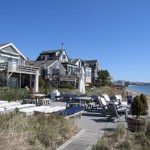
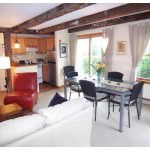
Hopefully this post has illustrated the incredible variety of properties in this price range. Buyers are always surprised at what their dollar can buy as they are always hearing about how expensive property is in town. It is a dynamic market segment with great variety of properties for sale.
One of my new favorite real estate blogs is KCM. A great post below clearly illustrates the simple reasons that buying now may not be a bad idea. Don’t you love the perfect nuclear family pictured? They don’t look particularly happy. Just saying! I don’t normally post “buy now”, “sell now” articles but occasionally they organize information and provide a bit of national context to our own micro market here.
by THE KCM CREW

The real estate community is often criticized for always seeming to have a Pollyanna attitude about the housing market. Many believe that the industry’s current call ‘to buy now’ is nothing more than a scare tactic with the sole purpose of creating more commissions for the industry. Let’s take a look at whether or not that advice was good advice over the last year.
The ‘cost’ of a home is determined by two major components: the price of the home and the current mortgage rate. According to the most recent Case-Shiller Home Pricing Index, home values have risen over 10% in the last year. If we look at Freddie Mac’sWeekly Primary Mortgage Market Survey®, the 30 year mortgage rate has increased from 3.67% to 3.91% during that same period.
The table below compares the cost of the same exact house over the last twelve months:

We can see that the advice to buy a year ago made complete financial sense.
Most experts are not only calling for prices to continue to rise but are also upgrading their projections as the housing market is showing strong signs of recovering.
Regarding interest rates, the 30 year mortgage rate has soared by over a half point already this year and many believe that the increases will continue. Even those trying to be the voice of reason on this issue are projecting higher rates. For example, Polyana da Costa, senior mortgage analyst at Bankrate.com said:
“Rates are unlikely to keep going up so quickly and should remain below 5 percent.”
The next time a real estate professional says that now is the time to buy they may not be giving you a ‘sales pitch’. They may be giving you nothing but excellent advice.
Terrific post by Colin Robertson at TheTruthAboutMortgage.com
Now that mortgage rates have gone absolutely haywire, I decided it would be prudent (and helpful) to create a “mortgage payment chart” that details the difference in monthly payment across a variety of interest rates.
So if you were quoted a rate of 3.5% on your 30-year fixed mortgage two weeks ago, but have now been told the rate is closer to 4%, you can see what the difference in monthly payment might be, depending on your loan amount.
Click to enlarge
My first chart highlights monthly payments at different rates for 30-year mortgages, with loan amounts ranging from $100,000 to $1 million.
I went with a bottom of 3.5%, seeing that mortgage rates were around that level about a month ago, and probably won’t return there (EVER).
However, there is the possibility that rates could drift back in that direction. And one might be able to buy their rate down to around that price, assuming they want an even lower rate.
For the high-end, I set interest rates at 6%, which is where 30-year fixed mortgage rates were for many years leading up to the mortgage crisis. With any luck they won’t return there anytime soon…
Of course, they could rise even higher over time, but hopefully rates won’t climb back to the double-digits last seen in February 1990.
That fear aside, this mortgage payment chart should give you a quick idea of the difference in payment across a range of interest rates and loan amounts, which should save some time fooling around with amortgage calculator.
Below is a mortgage payment chart for 15-year fixed mortgages, which are also quite popular. I used a floor of 3% and a max rate of 5.50%. Again, rates can and will probably climb higher, just hopefully not anytime soon.
Click to enlarge
For the record, you can obtain mortgage rates at every eighth of a percent, so it’s also possible to get a rate of 3.625%, 3.875%, 4.125%, 4.375%, and so on.
Tip: The lower the interest rate, the smaller the difference in monthly payment. As rates move higher, the difference in payment becomes more substantial.
On a $500,000 loan amount, the monthly payment difference between a rate of 3.5% and 3.75% is $70.36, compared to a difference of $77.93 for a rate of 5.25% vs. 5.5%.
Additionally, higher mortgage rates are more damaging to larger loan amounts. If you look at the 30-year chart, the payment on a $400,000 loan amount at 3.50% is cheaper than the payment on a $300,000 loan at 6%.
Lastly, note that my mortgage payment graph only lists the principal and interest portion of the mortgage payment. You may also be subject to paying mortgage insurance and/or impounds each month. Property taxes and homeowner’s insurance are also NOT included.
You’ll probably look at this chart and say, “Hey, I can get a much bigger mortgage than I thought.” But beware, once all the other costs are factored in, your DTI ratio will probably come under attack, so tread cautiously.
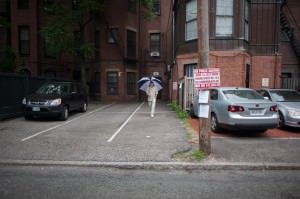
$560,000 buys you a tandem parking space in Boston’s Back Bay. This was all the news this past week. You can just imagine what people in the Midwest, or really anywhere else thought when they saw this story. That Bostonians are Bonkers? Well…everything is relative. Someone wanted these tandem spots pretty badly, and they could afford $560,000 to buy them
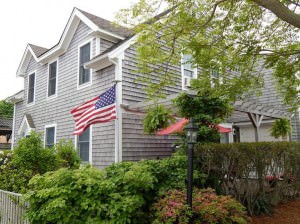
54 W Vine Street #A in Provincetown’s West End is a wonderful 2 bedroom, 3 bathroom condo with parking. It just went under contract with an asking price of $569K. This is the 3rd condo that has sold in the last 18 months in this very well run and attractive complex. This condo represents the best of the mid-market in town.
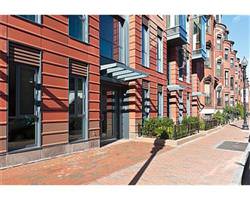
691 Massachusetts Ave is a one bedroom, one bath condo with an asking price of $570K. 691 Massachusetts Avenue is a newer condo building in Boston’s South End.
We all know that $560K for a parking space in the Back Bay is news. Parking is a rare commodity in the Back Bay and it certainly creates a new ceiling for parking space prices in Back Bay but doesn’t mean much for the market in general…other than adding a bit more confidence to the already very hot market.
Great national market recap from Tara Steele at Agent Genius.
by Tara Steele
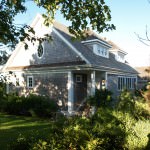
Although pending home sales improved only 0.3 percent in April, according to the National Association of Realtors, contract signings actually rose 10.3 percent compared to April 2012. Pending sales have now been above year-ago levels for the past 24 months, marking a very slow but somewhat sure recovery for housing.
Regional pending home sales varied, as the Northeast and Midwest saw improvement, while the South and West both dropped. NAR reports that home contract activity is at the highest level since April 2010, immediately before the deadline for the home buyer tax credit which spurred a metaphorical gold rush on homes.
Dr. Lawrence Yun, NAR’s chief economist said, “The housing market continues to squeak out gains from already very positive conditions. Pending contracts so far this year easily correspond to higher closed home sales in 2013. Total existing-home sales are expected to rise just over 7 percent to about 5 million this year.”
“Because of inventory shortages, higher home sales will push up home values to the highest level in five years,” Dr. Yun added. NAR says the national median existing-home price should increase close to 8.0 percent and exceed $190,000 in 2013.
Home contract activity rose 11.5 percent in the Northeast, marking a 17.7 percent increase from April 2012 and jumped 3.2 percent for the month in the Midwest, and a whopping 15.1 percent for the year.
Meanwhile, pending home sales slid 1.1 percent in the South, but rose 12.3 percent compared to April 2012. The tough spot is currently the West region which saw a 7.6 percent dip in signed contracts, pulling the region down 2.6 percent for the year.
The mid-market in Provincetown is the $400K to $800K price range. This segment represented 45% of total sales in 2012…46% of condo sales of 166 and 39% of single family sales of 52…in other words it is where the action is. Below are 3 condos and 3 single family properties that sold in 2012. 40 Pleasant is a beautifully renovated 2 bedroom condo in a 3 unit complex with wonderful outside space. 389 Commercial is a very special 1,384 square foot waterfront condo with vaulted ceilings and a huge deck. 14 Meadow is a free standing condo that lives like a single family home. 3 distinctly different properties in the mid priced segment.
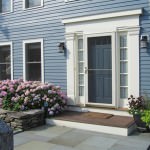
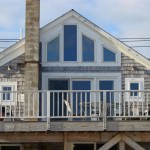


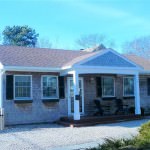
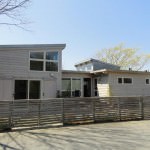
Currently there are 56 properties on the market priced between $400K and $800K representing 33% of the total condo and single family properties available of 155.
10 Washington St is a 3 bed 4 bath condo with 1,175 square feet. 145 Commercial St is in a beachfront complex in the West End. My favorite on market condo is 15 Cottage St. #9 on the pool at the Kensington Gardens complex. 1,710 sf, 3 bedrooms, separate dining room, chefs kitchen and 3 bedrooms for $594K.
The 3 single family’s shown represent some great values. 70 Race Point Rd is a 4 bedroom, 4 bath house with 2,736 square feet. 11 Willow Drive is s brand new 3 bedroom 3 bath house with 2,234 square feet . 1 Railroad Ave is a Provincetown gem and a value at $469K.
condos:
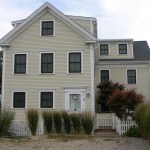

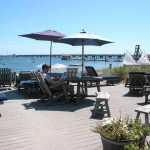
Some single family properties;

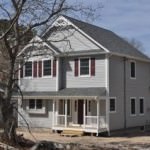
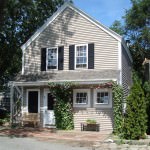
Year to date 20 properties have sold between $400K and $800K, 11 condos and 9 single families. This represents 33% of the total sold of 60. As you can see a perfectly symmetrical market dynamic. 33% of inventory and 33% of sales.
Below are a few of these sold properties. 50 Harry Kemp Way is a spacious townhouse style 2 bedroom condo in an well established condo complex. 381 Commercial is a beachfront condo in the East End and 61 Harry Kemp Way is a magnificent new construction single family home finished with the highest quality finishes.
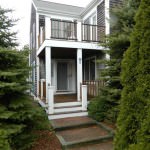
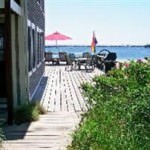
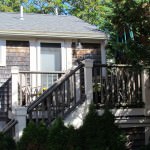
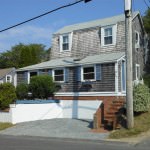
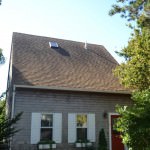
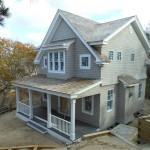
What do these facts and figures tell you about the mid-market here in Provincetown? That it is the most active important segment in the market. That in 2012 it was almost half of all sales in the market with the average condo in this segment selling for $539K, with 2 bedrooms, and 2 baths and 1,122 square feet. The average single family home sold for $621K, had 3 bedrooms and 2 baths and was 1,705 square feet. As you can see from the assortment of properties shown above, the diversity of style, type, location and price in this segment is surprisingly diverse. I’ll keep reporting on interesting developments in the mid market and let you know my favorites as new properties come available.